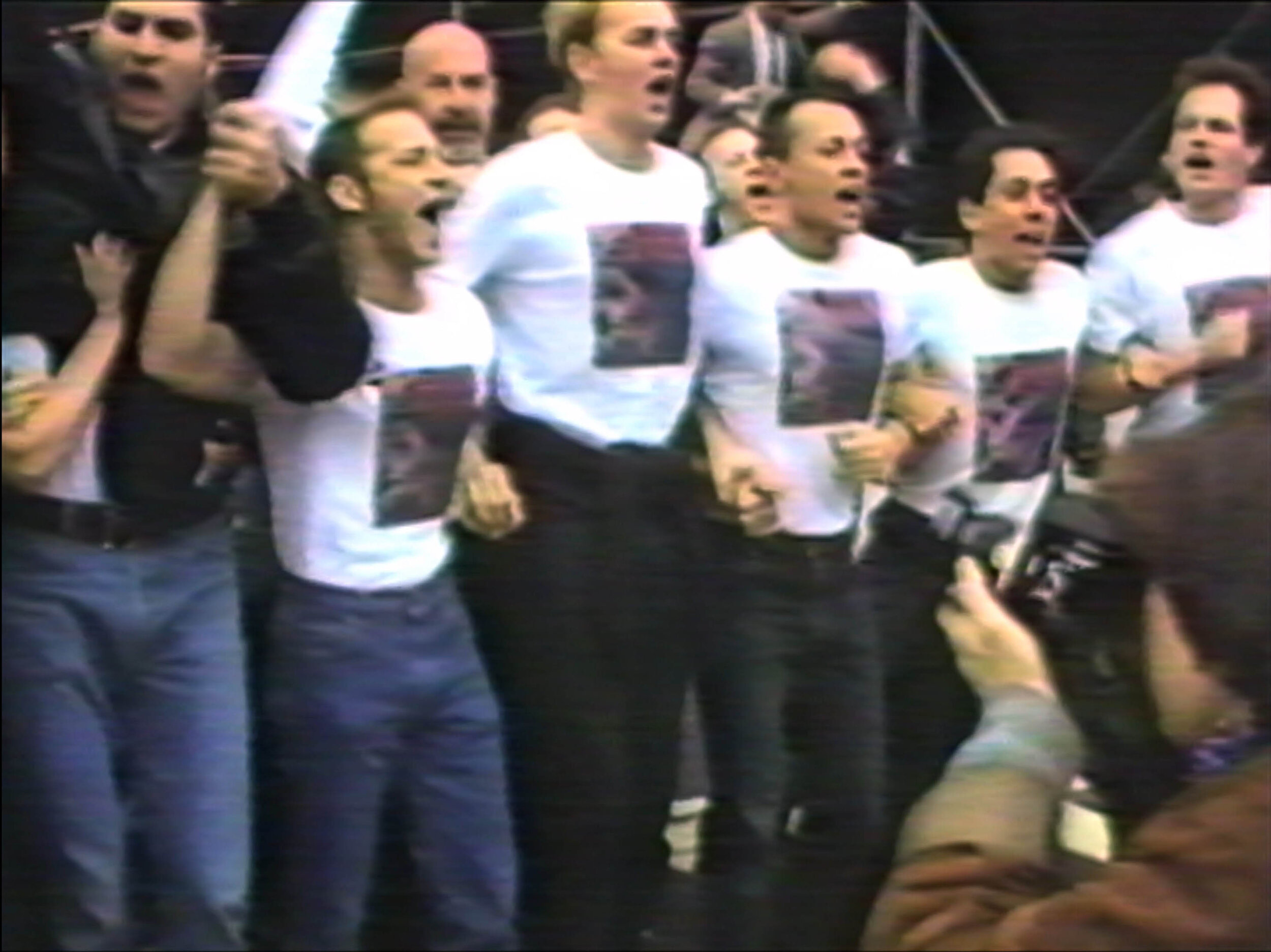
UNITED IN ANGER: A HISTORY OF ACT UP STUDY GUIDE
UNIT 3: ACT UP IN THE STREETS
Unit Summary
Unit 3 focuses on the most visible, memorable, effective, and controversial facets of ACT UP: its “actions,” including demonstrations, direct actions, zaps, and other public engagements by which the organization drew attention to and sought to alter the social injustices that created and sustained the AIDS epidemic.
The objectives of Unit 3 are:
To understand ACT UP demonstrations, zaps, and direct actions as strategies of social protest
To analyze the effectiveness of individual ACT UP actions and to compare different tactics the group used over time
To situate ACT UP actions within a historical trajectory of AIDS activism
To assess the pros and cons of protest strategies that attempt to force social change
Making Connections: The Language of Activism
ACT UP’s strategy of social engagement encouraged activists to confront injustice directly, quickly, publicly, and forcefully in order to draw attention to the urgency of the problem and with the goal of effecting timely and concrete change. The many actions, an umbrella term for the demonstrations, street protests, and zaps deployed, are a key legacy of the group. To learn more about these actions, see this page on ACT UP’s actions and zaps.
Direct Action is a particular form of social protest used by ACT UP, one with a long history in social justice movements. While direct action can simply mean confronting a social ill head-on with little mediation, ACT UP members identified a problem and then inserted themselves within the gears of that problem in order to disrupt it, usually for a fairly limited window of time and always nonviolently. An example of this style of direct action from the Civil Rights Movement is the lunch counter sit-in at Woolworth’s department store in Greensboro, North Carolina in February 1960. Denied service at the lunch counter because of Woolworth’s policy of racial segregation, African American students engaged in direct action protest by physically occupying the white-only counter and refusing to leave when the management ordered them to do so. By positioning their bodies directly in the way of the store’s racist policies, the students not only disrupted business as usual but also quite literally achieved integration and eventually forced Woolworth’s to reverse its policy of racial segregation.
Before continuing, watch ACT UP member Amy Bauer’s perspective on direct action in her ACT UP oral history.
Clip #1
Key Terms
action
demonstration
direct action
political funeral
strategy
tactic
zap
STUDY GUIDE HOME
UNIT 1: HISTORICIZING ACT UP
UNIT 1: PROJECTS AND EXERCISES
UNIT 2: THE STRUCTURE OF ACT UP
UNIT 2: PROJECTS AND EXERCISES
UNIT 3: ACT UP IN THE STREETS
UNIT 3: PROJECTS AND EXERCISES
UNIT 4: THE POLITICS OF HIV/AIDS MEDICINE
UNIT 4: PROJECTS AND EXERCISES
UNIT 5: ACTIVIST ART
UNIT 5: PROJECTS AND EXERCISES